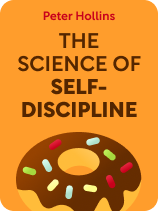

This article is an excerpt from the Shortform book guide to "The Science of Self-Discipline" by Peter Hollins. Shortform has the world's best summaries and analyses of books you should be reading.
Like this article? Sign up for a free trial here.
How do motivation and discipline go hand-in-hand? What are the three types of motivation?
According to Peter Hollins, if you have a clear idea of what you want to achieve through discipline, it will motivate you to keep your healthy habits on track. By keeping this idea in mind, you’ll also persevere through challenging moments in life.
Discover more about how to use the three types of motivation to stay disciplined.
The 3 Types of Motivation: Independence, Excellence, and Service
Hollins explains that there are three types of motivation: independence, excellence, and service. A motivating goal will relate to at least one of these categories.
1. Independence: This is a sense that you have the freedom to decide your actions. When you feel in control of your life and work, you’re motivated to be more engaged and productive.
2. Excellence: This is your innate desire to improve at things. When you feel motivated to get better at something, there’s practically no end to this drive because it’s impossible to be perfect at anything.
3. Service: This is the idea that your discipline will have a meaningful effect on the world. For example, if you believe that the smoothie shop you’re disciplined to save money for will bring joy and nutrition to your community, you’ll probably be more motivated to follow through with opening it than someone who is opening a business solely for personal profit.
| Make the Most of Your Motivator In Find Your Why, Simon Sinek argues that the most compelling motivator is more than just a goal—it should be your life purpose. Sinek recommends writing your purpose as a personal mission statement. He says it should include the following characteristics, some of which overlap with Hollins’s description of a motivating goal: It should be short and easy to understand. It should highlight the positive impact you intend to have (service). It should be meaningful to you (independence). It should be something you strive toward in everything you do (excellence). For example, your mission statement might be to keep your family happy and healthy because they are the most important thing to you. Compared to Hollins, Sinek’s approach to “finding your why” includes more defined instructions on how to structure your motivator, but Hollins’s three categories of motivation listed above focus more on how to enrich your motivator with meaning. |
Hollins says that it’s also important to set discipline goals that are realistic enough to achieve but challenging enough to motivate you. If you shoot too high and don’t attain your goal, you might be discouraged and give up. However, if your goal is too easy, you’ll likely get bored with it. So, set realistic goals with measurable checkpoints to give yourself a sense of accomplishment and progress toward your goal. By doing this, you’ll see that you’re capable of improving, which will motivate you to continue with enthusiasm. Consistent positive reinforcement will also give your brain time to develop new neural pathways and adjust to new patterns of behavior, which will help you sustain discipline more effectively in the long run.
To set realistic goals, reflect on your past successes and failures, being honest with yourself about what factors led you to succeed or fail. Then, set a new goal that you think you could push yourself to achieve.
| Setting and Breaking Down Your Goals Similar to Hollins, Brian Tracy explains in Goals! that good goals are clear, measurable, and challenging. Additionally, Tracy emphasizes that it’s important your goals are aligned with your values and that they have deadlines to inspire urgency. Relating to Hollins’s point about balancing the challenge and feasibility of your goal, mapping out a detailed plan with incremental deadlines can be a way to gauge whether your goal is the right level of difficulty. You could even write out a plan that breaks your long-term goal into concrete, daily steps to keep you on track. For example, the authors of The 12 Week Year explain that you should outline a plan that breaks your long-term goal into specific, measurable, steps that push your limits and keep you accountable. |

———End of Preview———
Like what you just read? Read the rest of the world's best book summary and analysis of Peter Hollins's "The Science of Self-Discipline" at Shortform.
Here's what you'll find in our full The Science of Self-Discipline summary:
- Why changing habits takes far more than creating a routine
- Science-based habits and strategies for maintaining discipline
- How perfectionism holds us back from risk and success






